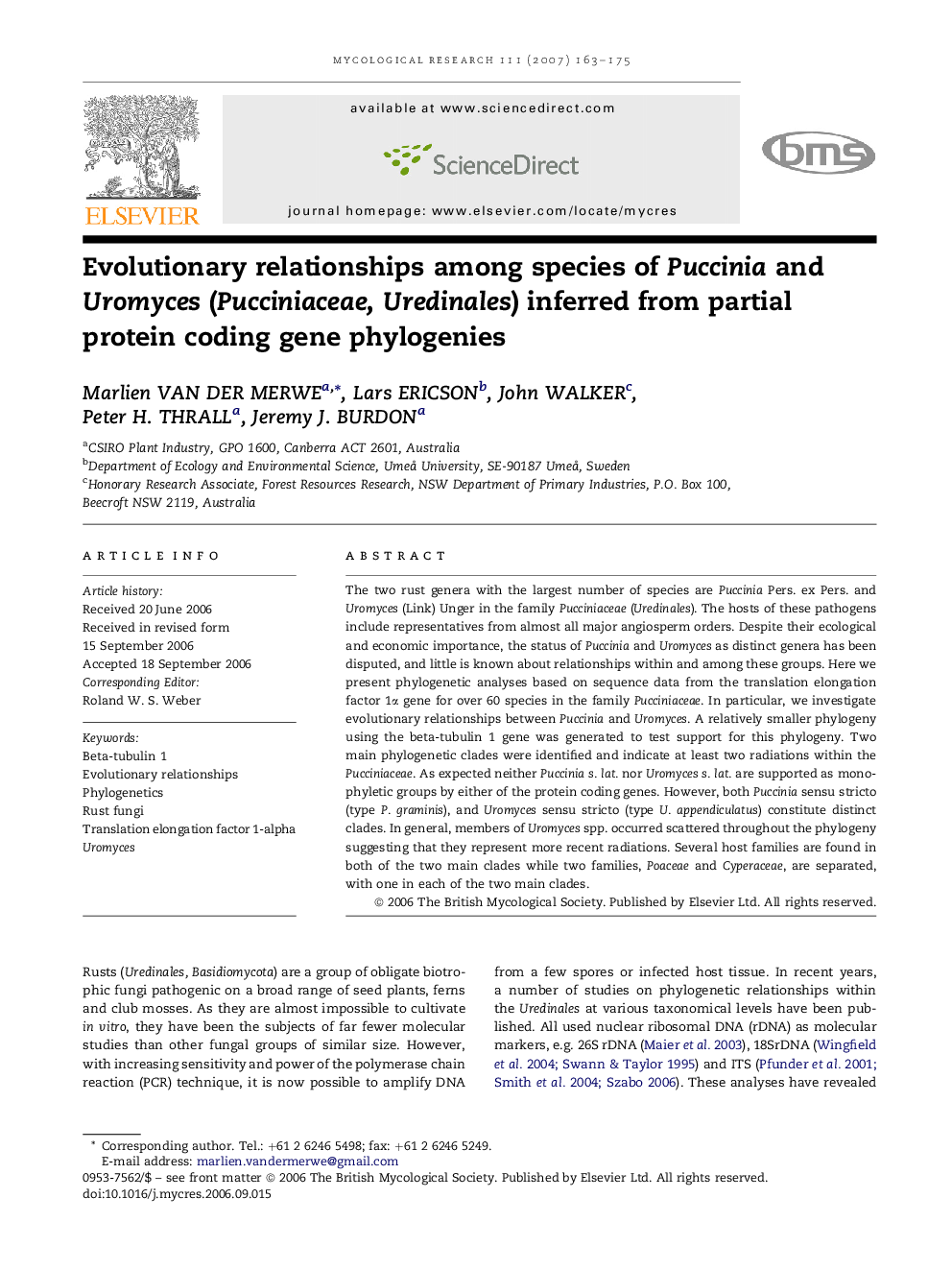| کد مقاله | کد نشریه | سال انتشار | مقاله انگلیسی | نسخه تمام متن |
|---|---|---|---|---|
| 4357978 | 1300118 | 2007 | 13 صفحه PDF | دانلود رایگان |

The two rust genera with the largest number of species are Puccinia Pers. ex Pers. and Uromyces (Link) Unger in the family Pucciniaceae (Uredinales). The hosts of these pathogens include representatives from almost all major angiosperm orders. Despite their ecological and economic importance, the status of Puccinia and Uromyces as distinct genera has been disputed, and little is known about relationships within and among these groups. Here we present phylogenetic analyses based on sequence data from the translation elongation factor 1α gene for over 60 species in the family Pucciniaceae. In particular, we investigate evolutionary relationships between Puccinia and Uromyces. A relatively smaller phylogeny using the beta-tubulin 1 gene was generated to test support for this phylogeny. Two main phylogenetic clades were identified and indicate at least two radiations within the Pucciniaceae. As expected neither Puccinia s. lat. nor Uromyces s. lat. are supported as monophyletic groups by either of the protein coding genes. However, both Puccinia sensu stricto (type P. graminis), and Uromyces sensu stricto (type U. appendiculatus) constitute distinct clades. In general, members of Uromyces spp. occurred scattered throughout the phylogeny suggesting that they represent more recent radiations. Several host families are found in both of the two main clades while two families, Poaceae and Cyperaceae, are separated, with one in each of the two main clades.
Journal: Mycological Research - Volume 111, Issue 2, February 2007, Pages 163–175